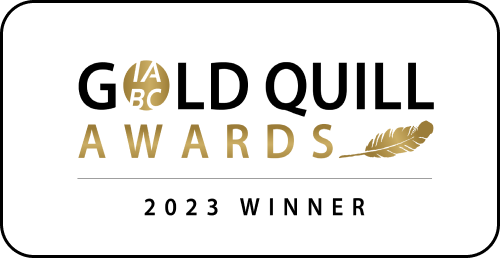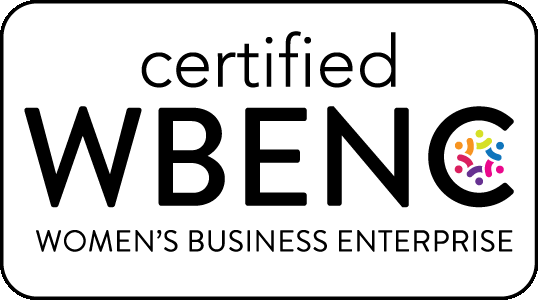Change is constant. Change can be difficult. And change demands highly effective communication. There’s a natural interdependency between change management and employee communications – but it’s not always an easy relationship.
We spoke with Shaun McMillan, a change management professional who has worked with Johnson & Johnson, Kenvue, and other leading global pharmaceutical companies, about the ingredients for a successful partnership between communication and change management professionals. Here are her insights.
OKG: In many ways, communication and change management professionals are natural collaborators in driving organizational transformation. What makes for a successful partnership?
Shaun: I’d say it boils down to five related principles.
First, establish a clearly articulated and shared vision – a blueprint for the team’s work that they can return to when they hit a roadblock.
Second, create the conditions for trust – transparency, flexibility, and open lines of communication. This will help each group gain credibility with the other.
Third, set clear priorities and expectations, including roles and responsibilities, meeting protocols, and success measures. Change and communication professionals often have blended roles, so it’s important to be clear about who owns what. But it’s more than creating a RACI (Responsible, Accountable, Consulted, Informed) chart – it’s also critical to treat each other with respect from the get-go.
Fourth, understand how team members work and what they need. Are they task-based or relationship-based? Visual or verbal? This is especially important when you’re working across time zones, cultures, and age groups.
Fifth, and perhaps most important, remember you’re all on the same team.
OKG: On the flip side, when and why do change management and communication teams sometimes fall out of alignment?
Shaun: The easy answer would be when any of the above success factors is missing. But the real danger is ambiguity. This often happens on “rush” projects (a.k.a. the “had to be done yesterday” scenario) when leaders don’t take the time to clearly define priorities and ground rules. Muddled objectives, management conflicts, unclear roles – these are a recipe for ambiguity, confusion, and misalignment.
OKG: From a change management perspective, what’s most important to get right?
Shaun: Know your stakeholders. Clearly identify, define, and reinforce the behaviors that will drive and support the change. Work from the top down and the bottom up. Show how senior leaders are living the change through testimonials – and by their behavior. Engage change champions at the peer-to-peer level to build momentum.
OKG: So, where does communication fit in?
Shaun: How does communication not fit in? It’s fundamental! And the same success factors apply. Communication is critical to changing behavior, as much as it is to inform, influence or align stakeholders.
OKG: Typically, employees affected by a major organizational transformation see multiple changes – in leadership, benefits and compensation, processes and systems, and their own responsibilities. How do we maintain employee focus, morale, and trust in the face of uncertainty and anxiety?
Shaun: Change is a constant in business today, so much so that we now routinely encounter “change fatigue.” And combatting change fatigue means building organizational resilience – as well as personal resilience, because people often experience these changes as significant life events.
We can promote personal resilience by making sure people feel safe asking questions – training and coaching leaders across the organization to encourage dialog and open communication on their teams.
And there are plenty of ways change and communication professionals can work together to build organizational resilience – for example, creating change journey maps for key stakeholder groups, so employees can envision themselves as part of the transition.
Success stories that demonstrate progress can be an antidote for change fatigue. Call out what people are excelling at. And pay attention to how we frame our messages. Psychologists call this “positive inquiry.” Instead of, “What have we learned,” or “How do we fix this?” ask, “What are we doing well? What can we do more of?”
Use written materials and visuals – video, photos, charts. Public recognition. Nuggets of information people can share with their teams and informal networks. Testimonials are great for building credibility and momentum.
And don’t forget – people are human. Change isn’t easy for anyone, and we need to meet others where they are on the journey.
OKG: Any final insights?
Shaun: A question worth asking is, “What does the future look like for change management and communications?” Current trends suggest demand for our services will continue – and we can make a tremendous impact when we work together.
In some organizations, change and communication professionals are building “change resistance plans” into their broader change communication strategies, to get ahead of specific objections and roadblocks. Generative AI can be a real asset here, to help teams analyze historical and real-time data to identify patterns and trends and predict potential obstacles and areas of success. Change management professionals have started to embed Gen AI in their activities – it’s here to stay.
And we’re starting to see companies where combined Organizational Change Management and Communications departments report directly to the C-suite. These senior leaders are sending a clear signal to employees and stakeholders: Change initiatives are a key priority, and it is imperative that we embrace the behaviors that drive successful change and build them into our culture.
To work with experienced, collaborative problem-solvers who know how to drive employee support for new initiatives and transformation change, contact us today.


